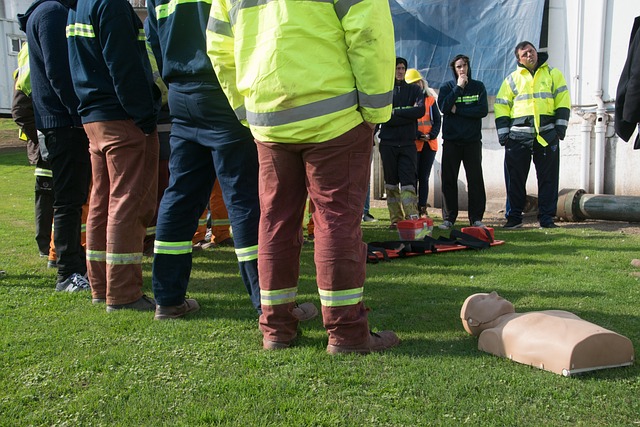Fire Fighter Roles – Emergency Response and Safety for 2025
Fire fighter roles involve responding to emergencies, conducting fire prevention activities, and maintaining safety equipment. Work may include handling rescue operations, assisting in accident response, and participating in community safety training. Suitable for individuals with strong physical fitness and a commitment to public safety, these positions require adherence to emergency protocols, teamwork under pressure, and ongoing training to maintain readiness for a variety of situations.

Core Responsibilities and Equipment Operation
Firefighters serve as frontline defenders in emergency situations, with their primary duty being to respond to fires in various settings including residential, commercial, industrial, and wilderness areas. Duties include operating fire suppression equipment and assisting in rescues. Modern firefighters must master an array of specialized tools, from traditional fire hoses and axes to advanced thermal imaging cameras that detect heat sources in smoke-filled environments. They operate powerful pumps that draw water from hydrants or natural sources, manage aerial ladders that can extend several stories high, and deploy specialized foam systems for chemical fires. Throughout emergency operations, firefighters maintain constant communication with team members and incident commanders, ensuring coordinated efforts in frequently chaotic situations.
Medical Response Capabilities
Beyond fire suppression, many firefighter positions involve providing first aid or supporting medical teams. In fact, most fire departments now require emergency medical training as part of their standard qualifications. Firefighters often arrive at emergency scenes before ambulance crews, making their medical intervention crucial in life-threatening situations. Their responsibilities may include performing CPR, administering oxygen, controlling bleeding, treating shock, and stabilizing patients with various injuries. Many departments employ firefighter-paramedics who can provide advanced life support including intravenous therapy, medication administration, and cardiac monitoring. This medical dimension of firefighting has become increasingly important as departments adopt an integrated emergency response model.
Work Schedules and Lifestyle Considerations
The firefighting profession demands a unique commitment to service that extends beyond traditional work hours. Work schedules often include shifts covering day, night, and weekends, with many departments operating on 24-hour shift rotations. A common schedule involves 24 hours on duty followed by 48 hours off, though variations exist across different departments. During their shifts, firefighters live at the station, sharing meals, training, and downtime with their colleagues. This creates a distinctive professional culture characterized by strong camaraderie and teamwork. The irregular schedule can present challenges for personal life and family commitments, requiring effective work-life balance strategies. However, the concentrated work periods also provide extended time off that many firefighters value.
Training Programs and Skill Development
Becoming a competent firefighter involves rigorous and continuous education. Training programs focus on safety, rescue techniques, and equipment maintenance. Initial training typically occurs at specialized academies and covers fundamental skills including fire behavior, building construction, hazardous materials handling, and rescue operations. Most programs combine classroom learning with practical drills that simulate emergency scenarios. After academy graduation, firefighters continue their education through regular departmental training and specialized certifications in areas such as technical rescue, hazardous materials response, or wildland firefighting. Professional development remains ongoing throughout a firefighter’s career, with many departments requiring a certain number of training hours annually to ensure skills remain current.
Application Process and Requirements
The path to becoming a firefighter involves a comprehensive selection process. Applications may require fitness tests, interviews, and background checks. Most departments establish minimum qualifications including age requirements (typically 18 or 21), education credentials (high school diploma or equivalent), and a valid driver’s license. The selection process often begins with a written examination testing basic academic skills and situational judgment. Candidates who pass advance to physical ability testing, which evaluates strength, endurance, and specific job-related capabilities like carrying equipment while climbing stairs. Additional screening may include psychological evaluations, drug testing, and thorough background investigations. Competition for positions remains high in many areas, with successful candidates demonstrating not only physical capabilities but also strong problem-solving skills and community service orientation.
Career Advancement and Specialization Opportunities
The firefighting profession offers various advancement paths for those seeking growth and development. After gaining experience as frontline firefighters, individuals may pursue promotions to positions such as driver/operator, lieutenant, captain, battalion chief, and beyond. These roles incorporate increasing levels of responsibility for personnel management, incident command, and administrative duties. Many firefighters also develop specialized expertise in areas such as arson investigation, public education, emergency management, or hazardous materials response. Some pursue additional education in fire science, emergency management, or public administration to enhance their advancement prospects. Professional growth typically involves a combination of experience, additional training, examination success, and demonstrated leadership capability.
This career information provides a general overview of the firefighting profession and is intended for educational purposes only. It does not represent specific job openings or employment opportunities. Those interested in pursuing careers in firefighting should contact their local fire departments directly for information about actual hiring processes, requirements, and available positions in their area.
Firefighter Health and Safety Considerations
The physical and psychological demands of firefighting necessitate robust health and safety protocols. Firefighters face numerous occupational hazards including smoke inhalation, extreme temperatures, structural collapse risks, and exposure to hazardous substances. Modern departments implement comprehensive safety programs that include proper personal protective equipment, decontamination procedures, rehabilitation during extended incidents, and post-incident medical monitoring. There’s also growing recognition of the profession’s psychological impacts, with many departments establishing behavioral health resources and peer support programs. Regular fitness training remains essential, as physical capabilities directly correlate with safety outcomes. Progressive departments emphasize injury prevention through proper lifting techniques, equipment design improvements, and operational risk assessments that help minimize unnecessary exposures while still accomplishing mission objectives.
This article is for informational purposes only and does not represent specific job openings or employment opportunities. For actual firefighter job listings and application information, please contact your local fire department or municipal government directly.




